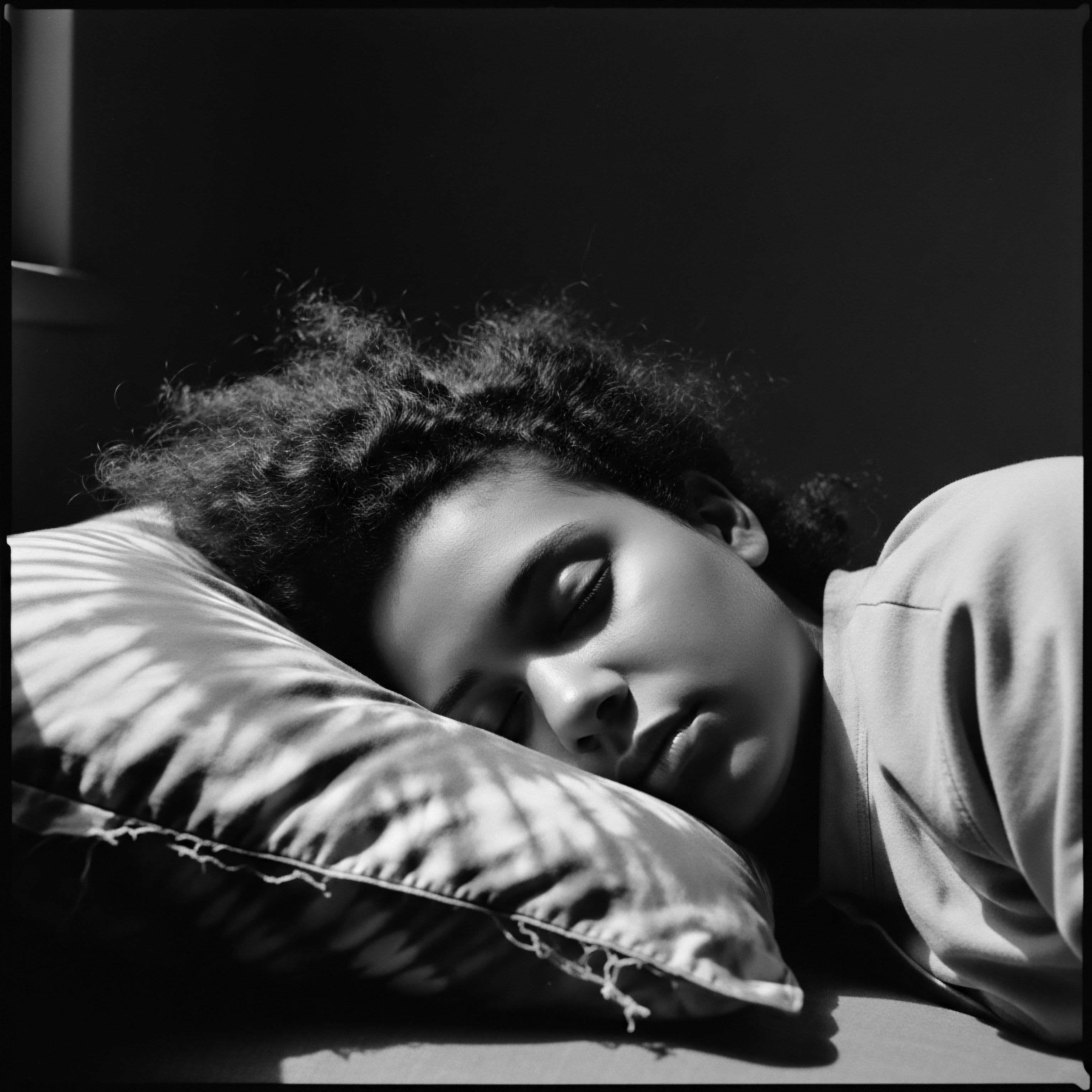
Roots
Consider for a moment the silent language woven into the very structure of textured hair, a narrative inscribed not by ink, but by helix and curl. It speaks of journeys across oceans, of resistance etched into scalp and strand, of wisdom passed through generations. For those with hair that coils, springs, or undulates in magnificent ways, the rituals of care transcend mere aesthetics.
They form a profound dialogue with ancestry, a living connection to lineages that stretch back through time, across continents, into the very genesis of human expression. The question, then, is not simply how did these practices come to be, but rather, why did textured hair care deepen into a sacred heritage practice, profoundly entwined with identity for Black and mixed-race communities?
The answer resides in the enduring spirit of individuals who, despite unimaginable trials, preserved and innovated traditions that honored their innate beauty. This unfolding story begins with the biology of the strand, then expands to embrace the ancient practices that recognized hair as a conduit for status, spirituality, and belonging. Through history’s crucible, these practices transformed from common custom to cherished legacy, becoming resilient acts of self-affirmation and communal identity.

The Intrinsic Architecture of Textured Hair
The very nature of textured hair, from its elliptical follicle shape to the tight coiling pattern of its keratin filaments, predisposes it to unique needs and characteristics. Unlike straight strands that shed moisture readily, the twists and turns of a coiled hair shaft present challenges for natural oil distribution from the scalp to the ends. This structural reality makes textured hair inherently more prone to dryness and breakage if not adequately cared for. Yet, this very uniqueness also gives rise to extraordinary strength, elasticity, and volumetric splendor.
Ancient communities, without microscopes or biochemical analyses, understood these properties through generations of observation and hands-on experience. Their methods, passed down verbally and through demonstration, were often intuitive responses to these biological truths.
Textured hair’s unique biological makeup necessitated specialized care, fostering ancestral practices tuned to its specific needs.
From the earliest records, across African civilizations, hair was never a trivial matter. It served as a sophisticated visual lexicon, communicating far more than personal adornment. Hair could signal one’s tribe, social standing, marital availability, age, or even spiritual devotion. In many West African societies, the intricacy of a braided style could reveal a person’s wealth or position within the community.
For instance, archaeological evidence suggests that various braiding patterns were used to identify tribe, age, wealth, marital status, and religion among the Himba people in what is now modern-day Namibia, dating back to 3500 BCE (Afrocenchix, 2024). This understanding underscores that care was not separate from style; both were integrated into a holistic approach to hair as a central marker of self and collective identity.

Early Cultures and the Role of Hair
Consider the civilizations along the Nile Valley, where elaborate hairstyles adorned royalty and commoners alike, often signifying status or connection to the divine. The ancient Egyptians, for example, wore intricate braids and wigs, adorned with gold, beads, or other materials, reflecting status and devotion (Afriklens, 2024). Across diverse West African communities, such as the Yoruba, Wolof, and Fulani, distinctive braiding patterns were developed, each holding cultural and spiritual meanings. Skilled braiders, often revered members of their societies, held the knowledge to craft these significant styles (Afriklens, 2024).
This reverence for hair as a living aspect of the individual and the community formed the bedrock of early care practices. Cleansing with natural clays and plant extracts, conditioning with rich butters and oils harvested from the land, and meticulous styling were all part of maintaining the vitality of these symbolic crowns. The deep engagement with hair, often a communal activity, created bonds and transferred knowledge through observation and participation.
- Baobab Oil ❉ Extracted from the majestic African baobab tree, this oil provided profound moisture for hair and scalp in many communities, known for its fatty acid profile.
- Shea Butter ❉ From the karite tree, this rich butter served as a natural sealant and conditioner, a staple across West Africa for centuries to protect strands from the sun’s intensity.
- Henna ❉ Used in North and East African traditions, not only for color but also for strengthening hair, adding luminosity, and conditioning the scalp.
The physical act of hair styling, often taking hours or even days, fostered an intimate setting for storytelling, cultural instruction, and social cohesion. This was the first layer of heritage ❉ hair care as a daily or weekly performance of community, a tangible connection to shared experience.

Ritual
The transition from fundamental understanding to lived practice brought forth a rich tapestry of rituals. These were not simply routines; they were deliberate acts infused with meaning, passed from elder to youth, shaping identity and preserving continuity. How has textured hair care evolved into a heritage practice through the interplay of ancient techniques and the profound trials of history? The answer lies in the persistent spirit of innovation and adaptation that transformed hair care into a statement of being, particularly through times of profound cultural disruption.
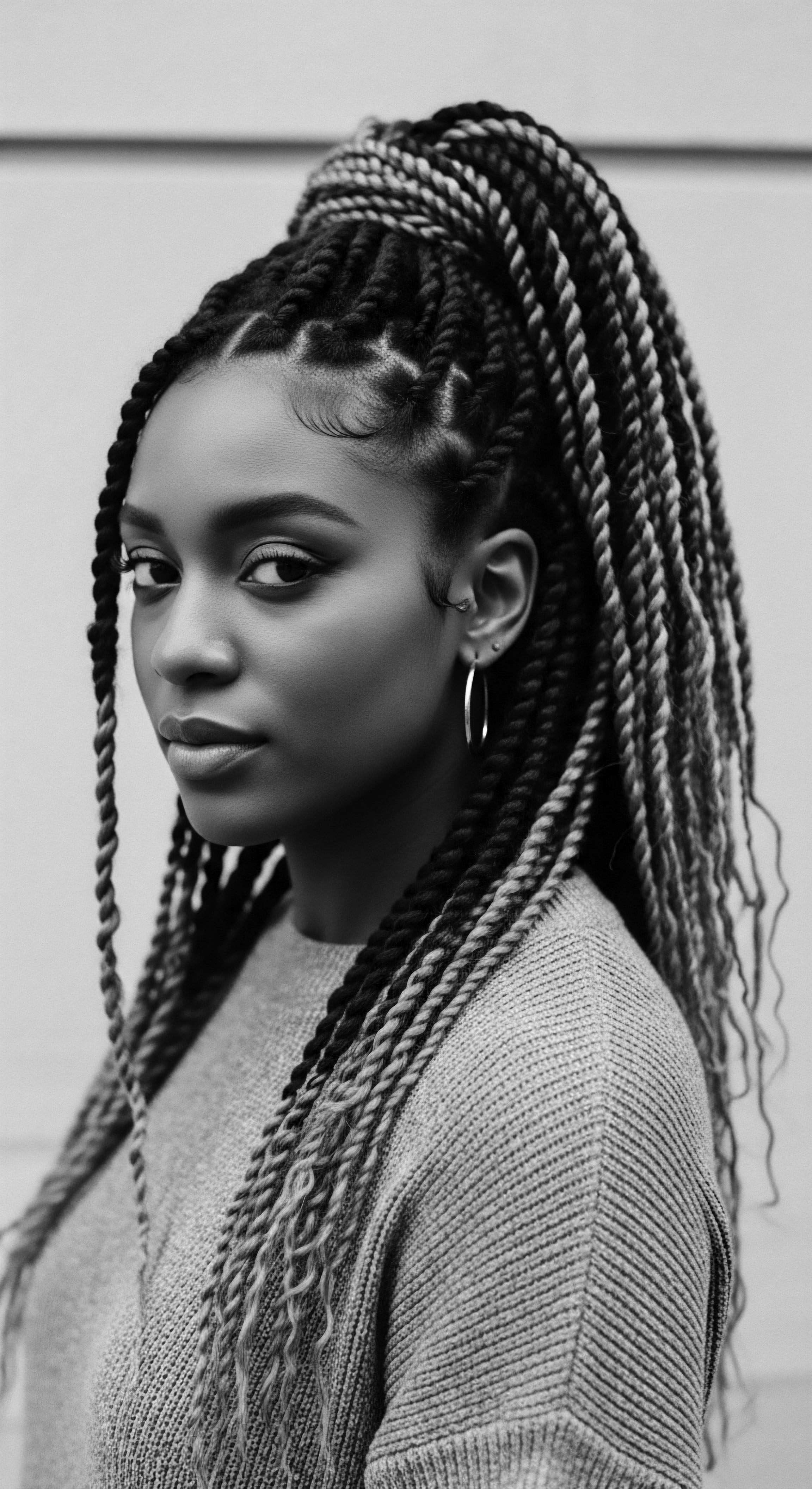
Styling as a Cultural Dialect
For millennia, styling textured hair served as a potent form of communication. From the elaborate coils of ancient Nubia to the intricate braids of West African kingdoms, each pattern and adornment held layers of information. Hair announced age, marital status, social rank, or tribal affiliation. Beyond aesthetics, some styles were believed to possess spiritual significance, protecting the wearer or connecting them to ancestral spirits (Noireônaturel, 2024).
These practices were deeply embedded in daily life, performed within communal spaces where knowledge, stories, and history were exchanged. The styling session transcended mere grooming; it became a living classroom, a sanctuary, and a forum for cultural reaffirmation.
Styling textured hair became a symbolic lexicon, communicating identity and cultural narratives through intricate designs.
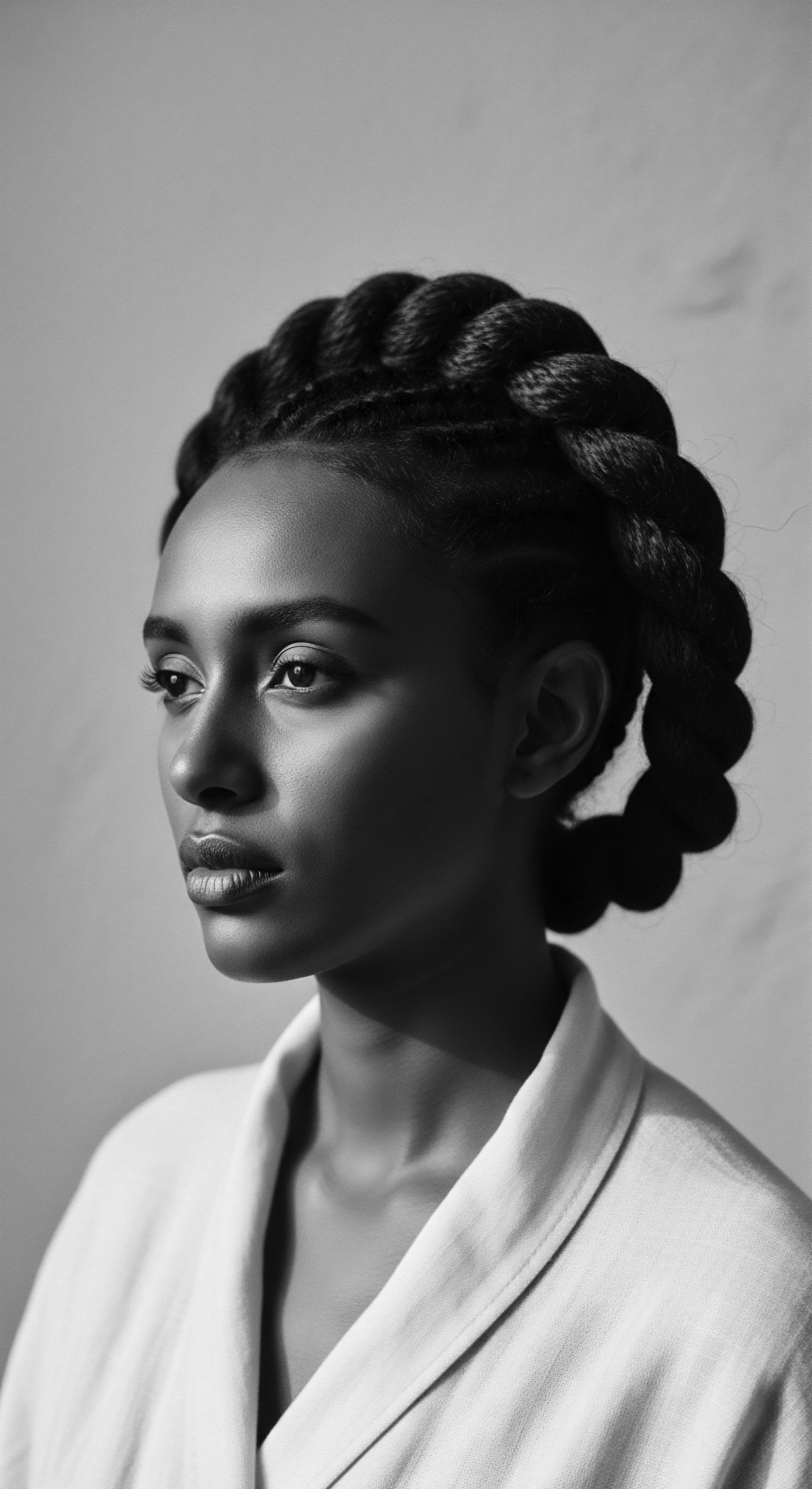
The Crucible of Displacement ❉ Hair as Resistance
The transatlantic slave trade, a period of immense human suffering and cultural erasure, profoundly altered the landscape of textured hair care. Enslaved Africans faced deliberate attempts to strip them of their cultural markers, often beginning with the shaving of heads upon arrival (Kilburn & Strode, 2021). Yet, in defiance of this dehumanization, hair practices became covert acts of resistance and preservation. Enslaved individuals repurposed whatever materials were available, using animal fats, plant-based concoctions, and even simple threads to maintain their hair.
They innovated, adapting ancient techniques to new realities. Braiding, in particular, persisted as a powerful act of defiance, a silent assertion of identity.
In a powerful testament to ingenuity and survival, cornrows sometimes concealed seeds for planting new crops in unfamiliar lands or, remarkably, served as maps for escape routes on the Underground Railroad (Odele Beauty, 2024). This historical reality, where hair became a literal tool for liberation, stands as a profound example of how textured hair care transitioned from a social practice to an essential heritage. Sybil Dione Rosado’s research highlights that for women of African descent, “hair and hairstyles are evidence of a set of rituals that are being practiced throughout the diaspora” (Rosado, 2003, p.
61). These rituals, born from resilience, became deeply patterned and socially transmitted, guiding behavior and preserving a body of beliefs and values (Rosado, 2007).
The tignon laws in colonial Louisiana, which forced free women of color to cover their hair as a marker of perceived inferior status, illustrate the deliberate suppression of Black hair expression. Yet, these women responded by transforming simple headwraps into elaborate, artistic statements, reclaiming dignity and style even in oppression (Buala, 2024). This period solidified hair care as a site of both control and liberation, embedding it deeply within the cultural memory.

The Rise of Enterprise and Self-Determination
The late 19th and early 20th centuries witnessed a surge in Black entrepreneurship within the hair care sector. With mainstream beauty industries ignoring the specific needs of textured hair, visionary women like Sarah Breedlove, known as Madam C.J. Walker, and Annie Turnbo Malone stepped forward. They formulated products designed to address the unique concerns of Black hair, such as dryness and scalp ailments.
Madam C.J. Walker’s empire, built on her “Walker System” of products including a gentle shampoo, nourishing pomade, and a hot comb, provided effective solutions and empowered countless Black women, establishing her as America’s first self-made female millionaire (HBCU Leggings, 2024).
This era, though marked by the popularization of straightening methods to conform to Eurocentric beauty standards, also symbolized self-sufficiency and economic empowerment within Black communities. These pioneers didn’t simply sell products; they built networks of stylists, provided employment, and fostered a sense of community around shared beauty practices. Their work laid foundations for an industry that understood the nuances of textured hair, validating a heritage of care that was often devalued by wider society.
| Historical Era Ancient Africa |
| Key Innovation / Practice Communal braiding, natural plant-based treatments. |
| Heritage Connection to Textured Hair Care Styles communicated social status, tribe, and spiritual beliefs; fostered community bonding and knowledge transfer. |
| Historical Era Transatlantic Slave Trade |
| Key Innovation / Practice Covert braiding for communication, headwrap artistry. |
| Heritage Connection to Textured Hair Care Acts of resistance, preservation of identity, and tools for survival against cultural suppression. |
| Historical Era Post-Emancipation to Early 20th Century |
| Key Innovation / Practice Madam C.J. Walker, Annie Malone and their product empires. |
| Heritage Connection to Textured Hair Care Self-determined economic empowerment; development of specific products for textured hair needs in a segregated market. |
| Historical Era The enduring journey of textured hair care reflects a continuous adaptation and powerful assertion of heritage through changing circumstances. |

Relay
The story of textured hair care continues its relay, an ongoing transmission of wisdom and practice across generations, constantly adapting yet always rooted in its profound heritage. How does understanding the scientific nuances of textured hair strengthen its ties to ancestral care philosophies and inform a holistic approach to wellbeing? The modern embrace of textured hair, often termed the natural hair movement, is not a fleeting trend; it represents a conscious return to and reinterpretation of deeply ingrained heritage, supported by both scientific understanding and cultural affirmation.

The Science of Ancestral Wisdom
Contemporary hair science, with its advanced understanding of keratin structure, porosity, and moisture retention, increasingly validates many long-standing traditional care methods. For instance, the use of natural oils and butters, common in African ancestral practices, aligns with modern scientific understanding of their emollient properties and ability to seal moisture within the hair shaft, particularly for hair with high porosity. The concept of protective styling, practiced for millennia through intricate braiding and twisting, is now scientifically recognized for its role in minimizing manipulation, reducing breakage, and promoting length retention.
This convergence of ancient wisdom and modern inquiry highlights a continuous thread of knowledge. Ancestors observed, experimented, and refined their techniques through lived experience, discerning what truly benefited their hair. Today’s scientific tools merely offer a molecular-level explanation for what was intuitively understood and ritualistically applied. This dialogue between past and present enriches the heritage, demonstrating its timeless efficacy.
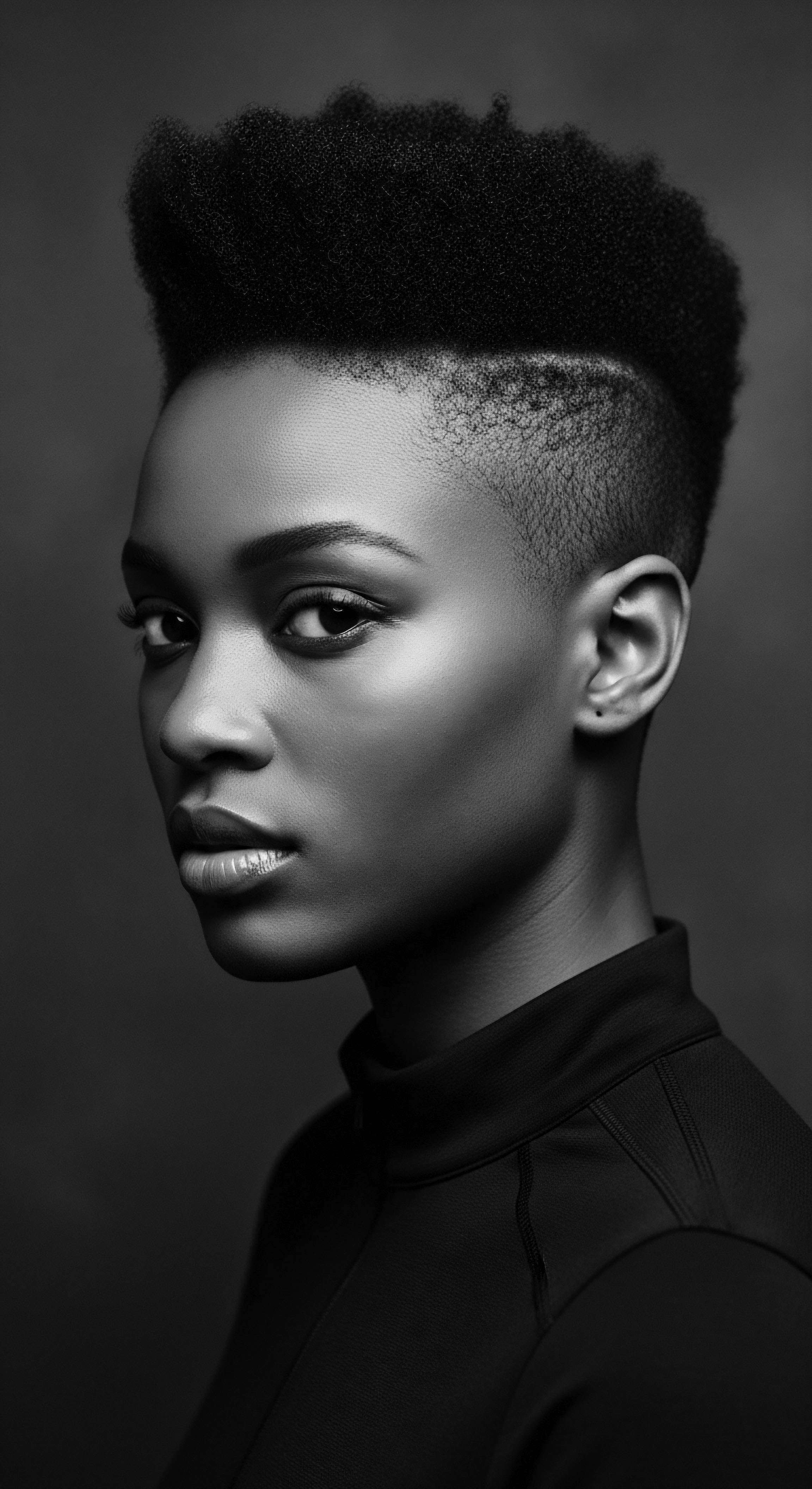
Nighttime Rituals ❉ A Sanctuary of Care
The practice of safeguarding hair during sleep, often with a bonnet or scarf, serves as a poignant example of heritage in daily application. This seemingly simple act protects delicate strands from friction, preserves moisture, and maintains style. But its roots delve deeper.
Historically, head coverings held immense cultural significance across African societies, signaling status, marital state, or spiritual devotion (Buala, 2024). In the diaspora, during enslavement, headwraps became a symbol of dignity and resilience, a means to protect hair while subtly defying imposed beauty standards (Afriklens, 2024).
The modern bonnet, therefore, is more than a practical item; it is a direct descendant of these historical head coverings, carrying a legacy of protection, preservation, and cultural assertion. It embodies a continuous commitment to care that acknowledges both the biological vulnerability of textured hair and the historical struggle for self-preservation.
- Silk Bonnets ❉ Valued for their smooth surface, reducing friction and preventing moisture loss from strands.
- Satin Scarves ❉ A practical and widely used alternative, offering similar benefits to silk in protecting delicate hair textures.
- Traditional Headwraps ❉ Beyond protection, they symbolize cultural continuity, historical resistance, and personal expression, echoing ancient practices.

Holistic Wellness and Hair’s Connection to Identity
The holistic perspective on hair health, deeply embedded in ancestral philosophies, views hair as an extension of one’s overall wellbeing, interconnected with mind, body, and spirit. This contrasts sharply with a fragmented, purely cosmetic approach. Nutritional wellsprings, stress management, and even community support were all understood to play a part in hair vitality. This ancestral wisdom informs modern holistic wellness approaches that consider diet, hydration, and stress reduction as integral to achieving radiant hair.
For many, particularly in Black and mixed-race communities, the journey with textured hair involves a deeply personal reckoning with historical narratives and societal pressures. Embracing one’s natural texture can become an act of self-acceptance and cultural reclamation. The natural hair movement, gaining momentum in the 1960s and 1970s and resurging in the 21st century, saw the Afro become a powerful symbol of Black pride and defiance against Eurocentric beauty norms (Afriklens, 2024; The Kurl Kitchen, 2024). This movement, and the daily choices it inspires, solidifies textured hair care as an ongoing heritage practice, a personal and collective statement of identity and resilience.
The establishment of legislation like the CROWN Act in various regions further underscores this heritage. This act, which stands for Creating a Respectful and Open World for Natural Hair, prohibits discrimination based on hair texture or protective hairstyles often associated with race (Refinery29, 2021). It is a legislative recognition of the deep cultural and historical significance of textured hair, elevating its care beyond personal preference to a matter of civil rights and heritage protection. This external validation mirrors the internal affirmation that textured hair care has long provided to individuals and communities.
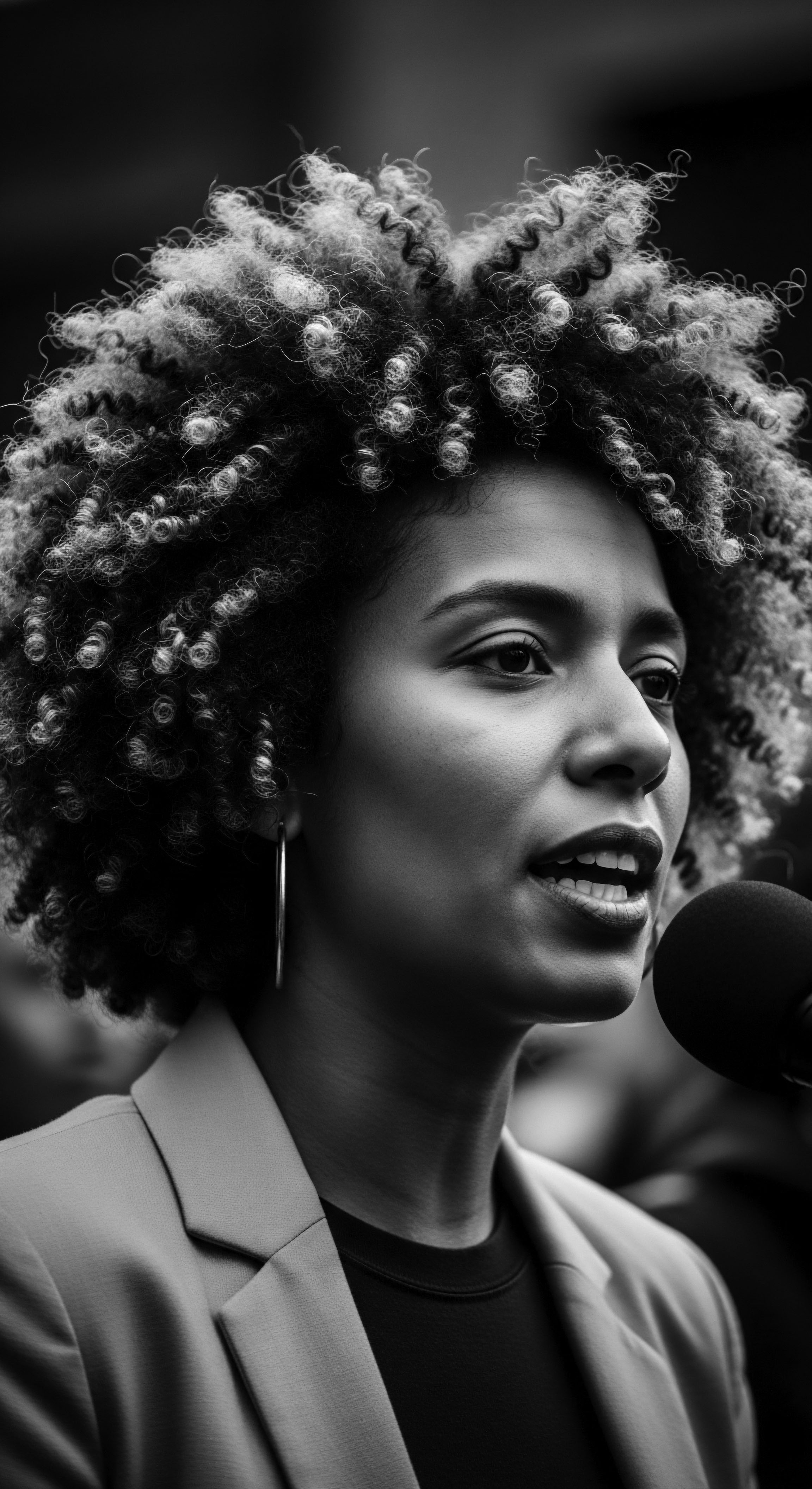
Reflection
The journey through the intricate world of textured hair, from its elemental biological makeup to its profound cultural resonance, reveals a truth that transcends simple grooming. Textured hair care, particularly within Black and mixed-race communities, has ascended to the status of a heritage practice. It became so not by accident, but by profound intention and necessity. Through eras of both reverence and oppression, the rituals surrounding coiled and kinky strands have served as a persistent link to ancestral wisdom, a canvas for self-expression, and a powerful symbol of endurance.
The echo from ancient communal braiding circles, the silent yet potent defiance of enslaved peoples weaving hope into their hair, the pioneering spirit of early Black entrepreneurs, and the reclaiming affirmation of the natural hair movements all contribute to this living archive. Each strand, in its unique spiraling form, embodies not only a personal story but also the collective narrative of resilience, identity, and profound cultural memory. This ongoing legacy affirms that true beauty resonates from a place of deep self-acceptance and a profound connection to one’s lineage.

References
- Afrocenchix. (2024, October 2). A Short Interesting History Of Hair Braiding.
- Afriklens. (2024, November 1). African Hairstyles ❉ Cultural Significance and Legacy.
- Buala. (2024, February 23). Hair as Freedom.
- HBCU Leggings. (2024, February 1). Black History Month Spotlight ❉ Pioneers in Black Hair Care.
- Kilburn & Strode. (2021, October 29). Afro-texture ❉ a hair-story.
- Noireônaturel. (2024). African braids ❉ a timeless heritage of beauty and cultural significance.
- Odele Beauty. (2024, January 16). A History Lesson On Hair Braiding.
- Refinery29. (2021, February 23). The Evolution Of The Natural Hair Movement.
- Rosado, Sybil Dione. “Nappy Hair in the Diaspora ❉ Exploring the Cultural Politics of Hair Among Women of African Descent.” PhD diss. University of Florida, 2007.
- The Kurl Kitchen. (2024, November 5). The Cultural Significance Of Natural Hair In Different Communities.
